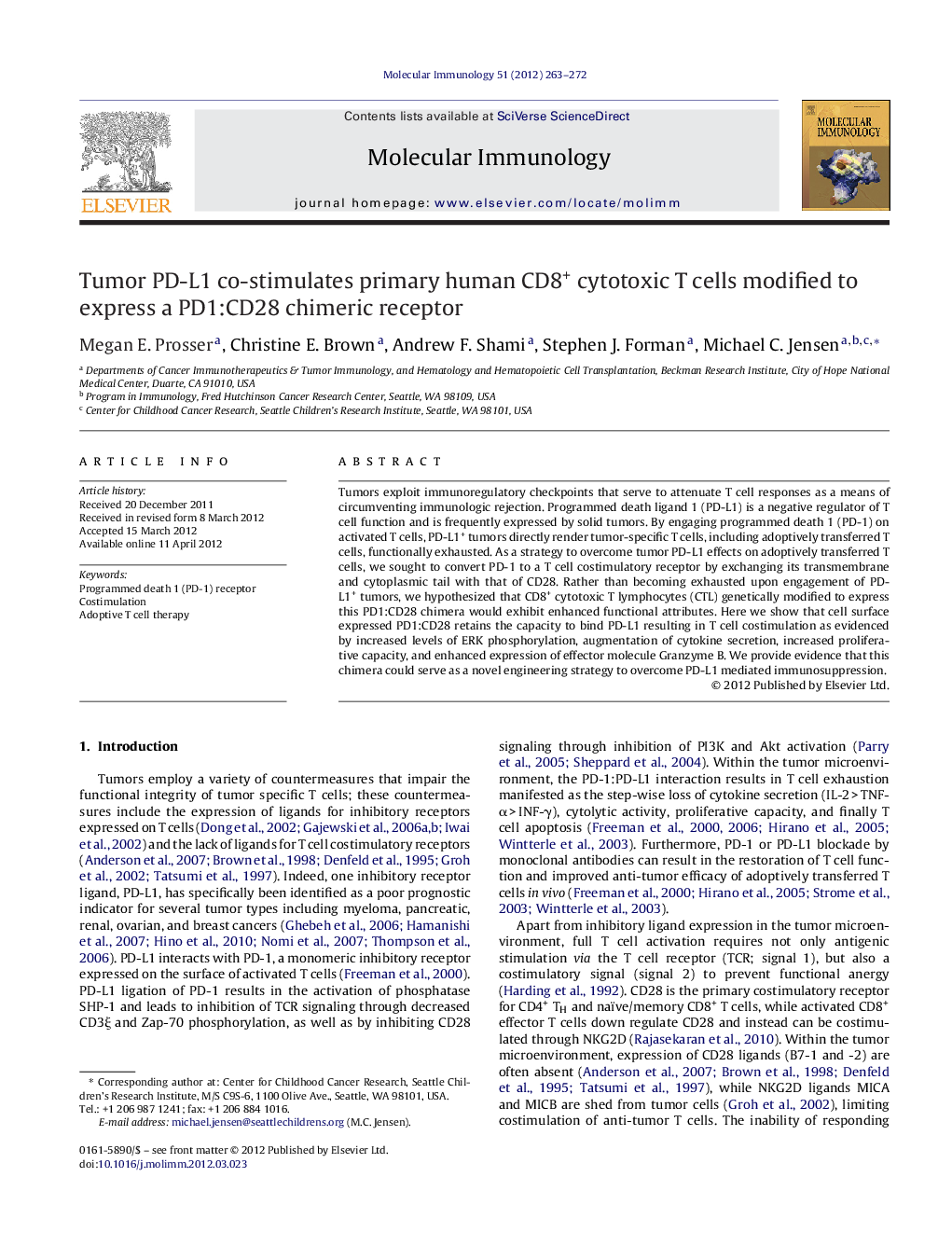| کد مقاله | کد نشریه | سال انتشار | مقاله انگلیسی | نسخه تمام متن |
|---|---|---|---|---|
| 5917378 | 1570731 | 2012 | 10 صفحه PDF | دانلود رایگان |

Tumors exploit immunoregulatory checkpoints that serve to attenuate T cell responses as a means of circumventing immunologic rejection. Programmed death ligand 1 (PD-L1) is a negative regulator of T cell function and is frequently expressed by solid tumors. By engaging programmed death 1 (PD-1) on activated T cells, PD-L1+ tumors directly render tumor-specific T cells, including adoptively transferred T cells, functionally exhausted. As a strategy to overcome tumor PD-L1 effects on adoptively transferred T cells, we sought to convert PD-1 to a T cell costimulatory receptor by exchanging its transmembrane and cytoplasmic tail with that of CD28. Rather than becoming exhausted upon engagement of PD-L1+ tumors, we hypothesized that CD8+ cytotoxic T lymphocytes (CTL) genetically modified to express this PD1:CD28 chimera would exhibit enhanced functional attributes. Here we show that cell surface expressed PD1:CD28 retains the capacity to bind PD-L1 resulting in T cell costimulation as evidenced by increased levels of ERK phosphorylation, augmentation of cytokine secretion, increased proliferative capacity, and enhanced expression of effector molecule Granzyme B. We provide evidence that this chimera could serve as a novel engineering strategy to overcome PD-L1 mediated immunosuppression.
⺠As a strategy to overcome the immunosuppressive effects of tumor programmed death ligand 1 (PD-L1) on adoptively transferred T cells, we sought to convert programmed death 1 (PD-1) to a T cell costimulatory receptor by exchanging its transmembrane and cytoplasmic tail with that of CD28. ⺠Our PD1:CD28 chimera is shown here to retain the capacity to bind PD-L1, resulting in the costimulation of primary human CD8+ CTL as evidenced by increased levels of ERK phosphorylation, augmentation of cytokine secretion, increased proliferative capacity, and enhanced expression of effector molecule Granzyme B. ⺠This body of work demonstrates the utility of the PD1:CD28 chimera as a genetic engineering platform to address tumor mediated immune suppression through PD-L1, and validates the development of PD1:CD28+ tumor-specific T cells for adoptive immunotherapy.
Journal: Molecular Immunology - Volume 51, Issues 3â4, July 2012, Pages 263-272